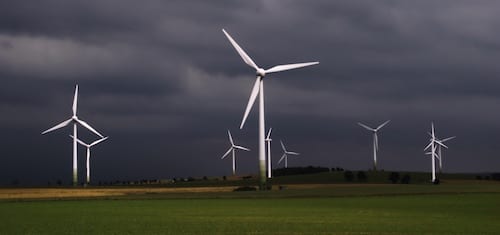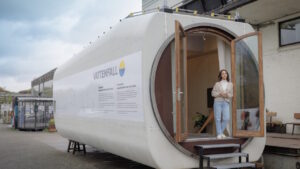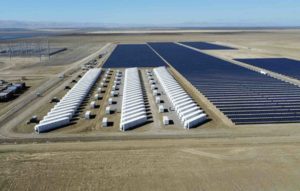The New South Wales state government has given planning approval for the Liverpool Range wind farm, which at more than 1,000MW could be the biggest in the country.
The wind project is being developed Australian renewable energy company Epuron and the planning permission allows for 267 turbines on 25 different properties between the villages of Coolah and Cassilis east of Mudgee.
Depending on the final choice of wind turbine, the project could exceed 1,000MW. It will stretch 36km from north to south and 20km east to west in the heart of the New England Tablelands, and part of it will be within the electorate of former National leader Barnaby Joyce.
The Liverpool Plains area to the north is one of the richest farming regions in Australia, but unlike the hotly-contested Shenhua coal mine north of the project, the wind farm will not get in the way of farming activities.
Epuron has been working on the project for seven years, and received its planning approval just over a week ago. All going well, and subject to the delivery of the project to an un-named, but identified buyer, construction could begin within a year.
Epuron says the Liverpool Range wind project would be a key part of the transition to renewable energy as more coal fired power stations closed down, reducing emissions and saving significant quantities of water now used in coal generators.
“I think we will start to see people talking more about power rather than renewables, and over the next coulee of years, most of that power will come from renewables,” says Epuron executive director Martin Poole.
NSW Planning Minister Anthony Roberts said the project would create 800 jobs and provide a significant economic boost to the local community. It was approved after changes were made to take into account concerns about noise and visual impacts, biodiversity, and construction traffic.
The number of turbines was cut by 16, some required increasing setbacks, and the number of proposed substations was reduced from six to four.
Poole said the project was agreed after consultations with a local community consultative committee that included landowners, neighbours and local businesses and local councils.
A Community Enhancement Fund will provide $800,000 per year (based on $3,000 per wind turbine built), the water saved from not burning coal would amount to 6,000 Olympic sized swimming pools a year, and emissions saved would be 2.4 million tonnes a year.
“Epuron thanks the community for coming on board with this wind farm,” Poole said.
“After almost 15 years working on wind and solar projects around Australia, Epuron continues to be committed to the clean, new energy system that Australians, and importantly our children, expect and demand.”
Poole told RenewEconomy that the Liverpool Range project would go ahead with “any reasonable policy outcome.” He noted that the ongoing uncertainty over the last 10 years has made it difficult “for all sorts of power projects”.











